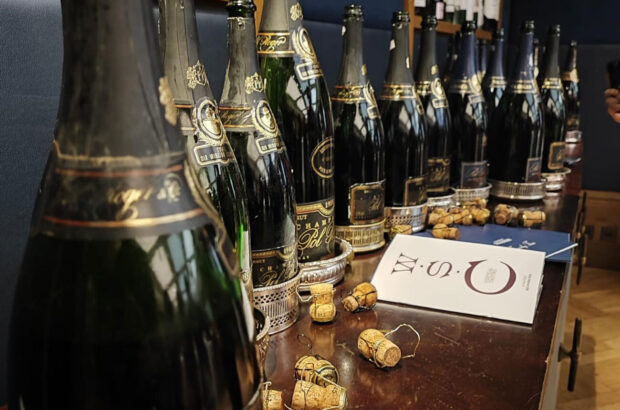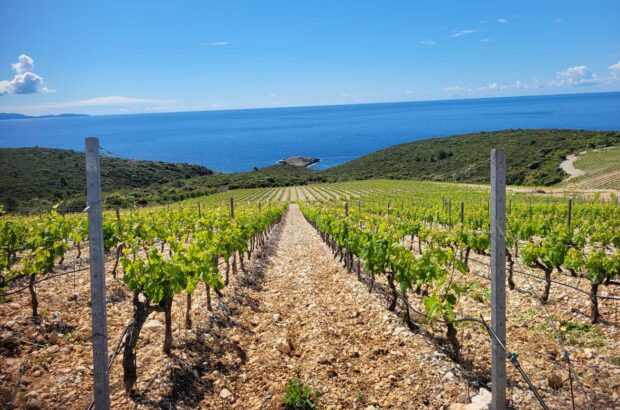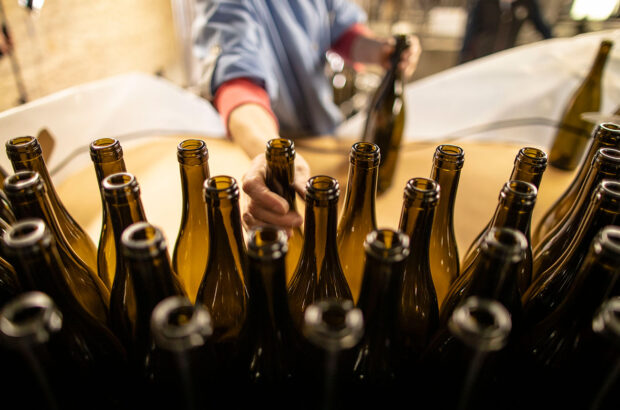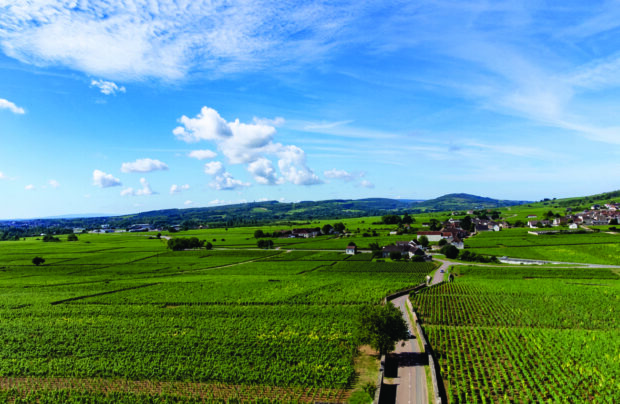Latour wine is unlike many other Bordeaux first growths: its stocks of historic vintages are as modest as its château. Hence, in part, the historic importance of this unique exploration of the château’s wines, held at Christie’s New York for 30 enthusiastic collectors of Latour.
Château Latour and Christie’s are both owned today by François Pinault. It was the président of Latour, Frédéric Engerer, who proposed that the château’s diminutive reserves of its oldest wines should be shown to a small group of connoisseurs. Pinault’s daughter, Florence Rogers, presided, with Engerer, at this unique event. As a member of the Conseil de Gérance of Latour, I was privileged to be there. The plan was to establish a definitive profile of Latour. Although we were to taste the greatest vintages of the 20th century, no decade was to be excluded.
Flight one
The first four wines represented classic Latour style. The 1988 was a plentiful vintage, the first when the vignerons were told to thin the crop in summer. (It has since become a regular practice.) At 12 years old, it still has a dark colour and smells intense, smokey and cedary. The flavour starts crisp and firm, and continues strongly structured, the flesh not obvious. A perfect marker vintage, said some, for the unbending character of young Latour.
The bouquet is faintly decadent, with touches of damp earth and rose petals. There is little intensity here: the flavour is complex, the texture gentle, the finish lingering. The 1975 caused more discussion. The colour is deeper than the 1978, the nose dense, herbal, even peppery. In the mouth, tannins are dominant; the wine is crisp, bright, even cutting – distinctly mouth- watering. Discussion centred on whether there is enough fruit to emerge eventually from the firm tannins. Based on the length of the finish, the wine has a long way to go. It certainly needs food.
The last of the group was 1966. There were many remarks on the depth of colour, succeeded by exclamations on the nose, the first of the tasting to show fully open, even floral, sweetness, ripe cassis underpinned with the mineral dimension of all great Latours. The sweet fruit has a bright cutting edge, giving it balance and charm. It is vital, elegant and very long. Sheer delight.
Flight two
The second flight represented Latour at its ripest and richest, starting with the opulent 1995. This was a big vintage, despite a summer-long drought. Oak dominates the nose with the smell of cappuccino, sweet, rich and intense. The palate, meanwhile, is a wall of ripe tannins, intense cassis, minerals and fine acidity. This is clearly a long-range wine of the highest calibre. The reputation of the 1990 goes before it. The nose is already voluptuous, hinting at black pepper and smoke, then overwhelming with rich black cherry, tar and spice. Cool, poised sweetness is the first palate impression, followed by opulence held in a tight structure of richly sensuous tannins. Certainly a great wine.
Once again, there was a plentiful vintage in 1982. The colour is still strikingly deep, the nose almost overripe, with hints of tar, raisins, chocolate and leather. For all its seductive power, though, it still has biting concentration and tannins keep the finish dry. It needs years to reveal all its treasures, but in time it will be a towering triumph.
Perhaps it was long maceration that gave the 1959 its depth of colour; deeper even than the 1982. Nothing could smell riper than the best bottle: positively honeyed, with layers of cedar, leather and violets. Another bottle had a slight mushroom smell. The general consensus was surprising: rich and massive as it is, the 1959 is still dominated by tannin, its finish drier than expected.
Flight three
This consisted of three famous vintages, considered to be among Latour’s greatest, starting with the still-infant 1996. It was a plentiful vintage after humid spring and early summer weather, which reduced the quantity and quality of the Merlot. Inevitably, tasters compared this with the other young wine of the tasting, the 1995. The 1996 had more of the open charm of youth, its nose fresh and sweet, less oaky than the 1995. Inevitably, the youthful palate is tight, but there is no mistaking the concentration and complexity here. A fresh note of acidity hints that this is more elegant than the 1995. For the moment, I prefer it.
The reputation of the 1970 has been so high for so long that we expected perfection. In youth, it had notable intense colour, which is now growing tuilé. The nose was not notably expressive; some thought the big vintage has finally peaked.
The last wine of this flight was the legendary 1961. This is a wine whose colour you can recognise across a room; a dark, glowing crimson, which, even at 40 years, is only starting to develop a paler rim. The nose is as fresh as mint, as rich as incense and as textured as wax. It has notes of cedar, smoke, iron and leather, but it is its sweetness that marks it out. It is impossible to analyse how rich, strong tannins and still-fresh acidity support this intensity of fruit. Or how it can be so powerful, yet so gentle. I was moved by it. I think we all were.
To follow the 1961 with the 1863 was a high-risk move. None of us could believe that the 137 year old could possibly compete. We were astonished to see it a healthy brick red, and ravished to find a bouquet at once intense, mellow and complex, with no signs of decay. It was sweet and rich, with distinct fruit, intense with the hallmark Latour touch of minerals on the mid-palate, and lingering in delicate, flowery, penetrating sweetness.
Into each life some rain must fall. Evidently it fell on the 1918. It had little body left, yet, even in old age, it defined itself with a waxy purity and persistence. The 1893 was considered a great vintage. The best of three bottles had a lovely sweet, penetrating bouquet. At first, there was warmth and fullness on the palate, then volatility attacked its foundations. I sipped the last drop with regret. With wines of this age, the state of preservation is, to some extent, a matter of chance. The 1881 had kept an excellent colour and a sweet, very ripe, if slightly musty, nose. It had no problem filling the palate, and a balance that showed little sign of breaking down.
The company discussed the celebrated pair of 1929 and 1928 before they were poured. The 1929 was a guaranteed pleasure in its day, while 1928 was always more of a challenge, so tannic that many thought it would never come out of its shell. The 1929 was as good as its promise: rich as a marrow bone, yet with an almost hallucinatory sweetness. It is drying a little on the finish, but remains captivating; a great wine. The 1928 fits firmly into the mould of great Latour vintages. Time has given it ripe intensity and notes of sweet flowers. This is a noble animal, if a bit burly: consistent, impressive and very long.
Matching Latour to food
The atmosphere in the tasting room was, by this time, almost euphoric. Discussion was intense: but there was one common theme, that of Latour’s typical initial austerity. ‘The fruit hangs around in the background. When it’s ready, it just shows up!’ Others talked of the identifying flavour that comes through, whatever the vintage; the hallmark of Latour’s terroir, something of minerals and the earth that rings true as a bell, in whatever combination with fruit, tannins or the layered flavours of maturity.
It was a bold stroke on Daniel Boulud’s part to serve three vintages with three very different lobster dishes. My favourite was lobster roasted in a Pauillac sauce with kabocha squash and raw porcini. How Boulud knew it would enter into the spirit of the seductive 1949, I can only surmise.
But about the wine… we started with the 1909, not a famous vintage. A little volatility played on the palate, but the sweet ripeness held up in the presence of lobster, almonds and caramelised shallots. Of the 1930s, 1934 is one of the few of vintages to be remembered. Its bouquet was a touch muffled, yet, curiously, the full-flavoured lobster with red pepper and a basil tapenade brought out its remaining vinosity. Coming back to the 1949, this really was everything I expected of this perfectly balanced, charming vintage. It is complete in its interwoven scents of fruit, liquorice, truffles and spice. It took lobster, squash and porcini in its lively stride. A veal roast, elevated by truffles, was paired with the 1955 and 1924 vintages. The 1955 was still clean and bright. It is not a big-bodied wine, but sweet, elegant and long, leading perfectly to the 1924, a wine I found beautiful in old age. Sometimes the ideal dish can support and fill out a fading beauty. To me, this was such a case.
The famous pair of 1900 and 1899 were matched with a meltingly rich dish of squab, morels and foie gras. The 1900 was exotically aromatic, blending sweet fruit with leather and coffee. It was broad and soft, structurally four-square and, in this sense, perhaps less fine than the 1899.
All agreed that the 1899 was a supremely elegant wine. The flavour was focused, clear as a bell – more classic Latour than the 1900. The legendary 1945 was the final wine, served with cheeses and an outstanding dessert: a millefeuille of salted caramel, bitter chocolate and coffee with a blueberry sauce heightened with mint. All flavours, I noted, that we had found in the various vintages. The 1945 is now a powerful brick-red colour, with a nose like a small explosion. At one moment it is like blackberries, the next plums, then smoke, the next hinting of vintage port. The vigour of the wine still attacks the palate. Indeed this 55 year old sums up the mystery of Latour: a vineyard that transmutes its grapes into something monumental, exotic and yet gloriously and consistently familiar.












